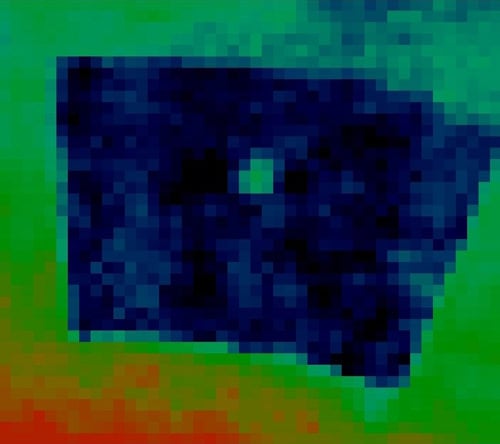[/caption]
Back in 2008, the
first multi-planet system of extrasolar planets was imaged
, and further study of the planets in this very young system is yielding some puzzling results. Astronomers using the Keck Observatory have been able to obtain the spectrum of one planet, HR 8799 b, revealing the temperature, chemical composition, and atmospheric properties of the planet. The planet's atmosphere is unlike that of any previously studied extrasolar planet, and it appears the planet is extremely cloudy, and also quite hot, even though it is very far from its host star.
"We are at a point where not only can we directly image planets around other stars, but we can begin to study the properties of their atmospheres in detail. Direct spectroscopy of exoplanets is the future of this field," said Brendan Bowler, a graduate student at the University of Hawaii and the lead author of the study.
Although over 500 planets have been discovered around other stars, only six planets have been directly imaged.
[caption id="attachment_21030" align="aligncenter" width="460" caption="Three exoplanets orbiting a young star 140 light years away are captured using Keck Observatory near-infrared adaptive optics. The planets are labeled and the two outer ones have arrows showing the size of their motion over a 4 year period. "]
[/caption]
HR 8799 b, is one of those imaged, and is one of three gas-giant planets orbiting the star HR 8799, located 130 light-years away from Earth in the constellation Pegasus. Bowler and his team said the properties of the planet's atmosphere can't be explained by current theoretical models of gas giant exoplanets, even those with what is considered a normal amount of thick or dusty atmospheres. From the new data on this planet, the astronomers believe that this exoplanet is extremely cloudy, and perhaps, all young gas-giant planets exhibit the same type of cloud cover in their atmospheres.
The technique the team used to determine the planet's temperature relies on the chemistry of the planet's atmosphere. Specifically, the presence or absence of gaseous methane can be used as a thermometer. The team found that HR 8799 b shows little or no methane in its atmosphere. Based on their spectrum and previously obtained images of the planet, and by comparing the observations to theoretical models of low-temperature atmospheres, they estimate the coolest possible temperature for the planet is about 1200 Kelvin (about 1,700 degrees Fahrenheit).
This planet is quite far from the star, 67 times the Earth-sun separation from the host star.
Current theoretical models predict HR 8799 b should be about 400 Kelvin cooler than they measured, based on the age of the planet and the amount of energy it is currently emitting. The team suspects the discrepancy arises because the planet is much more dusty and cloudy than expected by current models.
"Direct studies of extrasolar planets are just in their infancy. But even at this early stage, we are learning they are a different beast than objects we have known about previously," said University of Hawaii astronomy professor Michael Liu, coauthor of the study.
The planets around HR 8799 are incredibly faint, about 100,000 times dimmer than their parent star. To obtain the spectrum of HR 8799 b, the team relied on the adaptive optics system of the Keck II Telescope, and focused on the star for several hours. Then they used the Keck facility instrument called OSIRIS, a special kind of spectrograph, to precisely separate the spectrum of the planet from the light of its parent star.
A paper describing the study will be published in the Astrophysical Journal later this year, but you can
read the team's abstract here.
There's also a new paper out that suggests the these planets around HR 8799 could actually be brown dwarfs.
Source:
Keck Observatory
 Universe Today
Universe Today
